 Fire Alarm System or Fire Detection and Alarm System is a system or portion of a combination system that consists of components and circuits arranged to monitor and annunciate the status of fire alarm or supervisory signal-initiating devices and to initiate the appropriate response to those signals. In other words, a key aspect of fire protection is to identify a developing fire emergency in a timely manner, and to alert the building’s occupants and fire department. This is the role of fire detection and alarm systems. The basic components of a Fire Alarm System are Control Panel, Initiating Devices and Alerting Devices. There are two main Fire Alarm System arrangements, Conventional and Addressable Fire Detection and Alarm Systems.
Fire Alarm System or Fire Detection and Alarm System is a system or portion of a combination system that consists of components and circuits arranged to monitor and annunciate the status of fire alarm or supervisory signal-initiating devices and to initiate the appropriate response to those signals. In other words, a key aspect of fire protection is to identify a developing fire emergency in a timely manner, and to alert the building’s occupants and fire department. This is the role of fire detection and alarm systems. The basic components of a Fire Alarm System are Control Panel, Initiating Devices and Alerting Devices. There are two main Fire Alarm System arrangements, Conventional and Addressable Fire Detection and Alarm Systems.
Conventional Fire Alarm System
|
 |
Conventional system are connected in parallel to the signaling path so that the current flow is monitored to indicate a closure of the circuit path by any connected detector when smoke or other similar environmental stimulus sufficiently influences any detector. The resulting increase in current flow (or a dead short) is interpreted and processed by the control unit as a confirmation of the presence of smoke. Conventional fire alarm systems use analog technology and are hardware-based which are made up of zones. The zones connect the control panel. These zones have multiple devices including initiating and notification devices. These zones, to communicate to the control panel use electrical currents. To increase the amount of electricity flowing in the circuit, they use initiating and notification devices in case of an emergency or environmental conditions of fire such as heat and smoke, in the zones or area if the environmental conditions as sensed by the sensor exceeds a predetermined threshold. |
This increase or change in the electrical current is communicated to the control panel to trigger the alarm. The control panel differ in the number of devices it can support, so conventional fire alarm systems are limited in a way that the individual circuits communicate to the control panel, but it depends on the number of devices it can support. Another issue faced with conventional fire alarm systems is that it does tell us whether a device gets activated but you can’t determine which device and were throughout the area. With conventional systems, it will take time, especially for the firefighters to spread out and find out the source of the fire unless it’s a very small area. 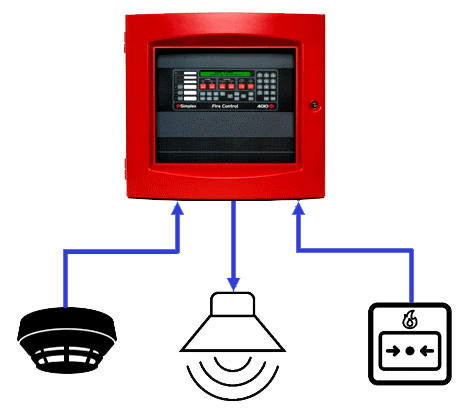 |
Addressable Fire Alarm System
|
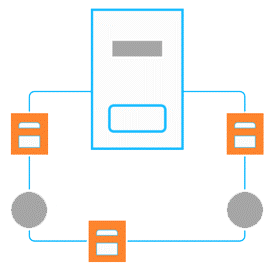 |
Addressable system gives each detector an individual number, or address. Addressable systems allow the exact location of an alarm to be plotted on the FACP, while allowing several detectors to be connected to the same zone. Addressable fire alarm systems use digital technology to transfer information. Addressable fire alarm system devices will send the messages to the control panel as a binary code. The binary code is generated through variations in voltage within the signaling devices. The benefit of this system is that according to its design the addressable fire alarm system can convey a wide variety of critical information to the control panel in comparison to the conventional fire alarm systems. |
The addressable fire alarm systems are able to offer much more variety and variation in the information that is sent to the control panel because they use digital technology.An added improvement is that the addressable system is able to recognize the location of the device needed or in critical condition and convey that information to you. The newer versions of Addressable fire alarm systems can even convey the amount of smoke or heat the detector is sensing. This helps avoid situations where the devices unnecessarily go into alarm mode. Because of the addressable fire alarm systems, it has become easier to control fires because you exactly get to know where the fire has started so you can immediately reach the site and stop it. With the addressable fire alarm systems, the firefighters will immediately get to know the origin of the fire. 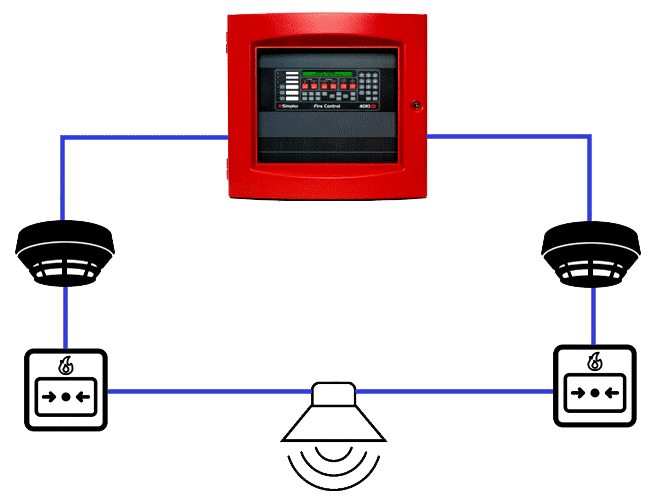 |
Special Applications
Wireless Fire Alarm System
|
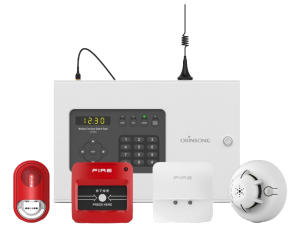 |
As the name suggests wireless fire alarms do not require wiring up so are perfect for situations where it may not be possible to install cabling, such as listed buildings or museums where this may appear unsightly. These alarm systems are easy to set up so can be installed on a temporary basis if a short term solution is required. These can be either addressable or conventional system. |
Comparison
The advantages and disadvantages of Addressable and Conventional Fire Alarm Systems can be concluded as below:
Conventional System
|
Addressable System
|
| Advantages + It is relatively simple for small to intermediate size buildings. + Servicing does not require a large amount of specialized training. |
Advantages + Stability + Enhanced maintenance + Ease of modification |
| Disadvantages – For large buildings, it can be expensive to install because of the extensive amounts of wire that are necessary to accurately monitor initiating devices. |
Disadvantages – Each system has its own unique operating characteristics. – Each system supports only limited brands. |
Applicable Notes:
- To design the Fire Detection and Alarm System, related standards such as NFPA 72 or EN54 shall be considered.
- Fire alarm systems save lives and protect property. Fire alarm systemsalso break down because they’re electrical. Class A or Class B wiring loops help the fire alarm panel to find and fix these breakdowns (faults) before a fire, while there is time for repairs.
Class A Fire Alarm Loop
|
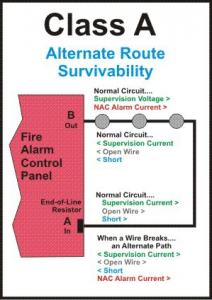 |
During fire, if a wire breaks, Class A Wiring provides an alternate route for signals to pass between field devices and the fire alarm panel. To keep more devices working, Class A uses a second path from the fire alarm panel; a redundant wire loop goes around the broken wire. A fire can still be detected, because, using this redundant path, most, if not all, devices on the loop remain connected to the panel. Basically, when the fire alarm panel detects an open wire in the Class A Loop, it automatically switches to using two separate un-supervised Class B loops. The first one is the original Class A loop, and second one back-feeds on the separate pair of wires to make the second Class B loop. Most of the devices on the original Class A loop will be on either the first or the second Class B loop. 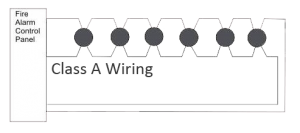 |
| Normal Class A wiring – All devices are supervised and working. |
 Class A wiring takes error detection further than Class B. If a wire breaks, the panel uses a redundant wire path to maintain communication with devices beyond the break. Here even though a wire is broken, all devices work. Class A wiring takes error detection further than Class B. If a wire breaks, the panel uses a redundant wire path to maintain communication with devices beyond the break. Here even though a wire is broken, all devices work. |
Class B Fire Alarm Loop
|
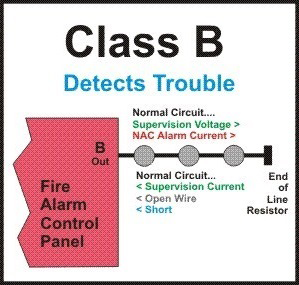 |
In conventional Class B Loops, all devices are daisy-chained together. By watching a small electrical current passing through the wires, the panel supervises them, and to limit this supervising current, at the end of the daisy-chain is an end-of-line resistor. The panel constantly watches for this current. If the supervising current stops flowing, the panel assumes a wire is broken (an open fault), and displays a trouble. When a wire breaks in Class B, the devices closest to the panel will still work, but because of the wire break, the devices further from the panel are cut off. 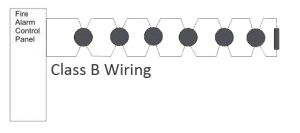 |
| Normal Class B wiring – All devices are supervised and working. |
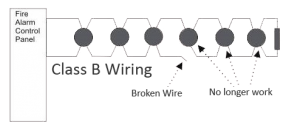 Open Fault in the Class B wiring. Supervision tells the panel that the wiring does not go through, but also the devices further from the panel don’t work. Open Fault in the Class B wiring. Supervision tells the panel that the wiring does not go through, but also the devices further from the panel don’t work. |
Our Services:
SISICO is able to offer an extensive range of Fire Detection and Alarm Systems to suit your specific environment. 
 Fire Alarm System or Fire Detection and Alarm System is a system or portion of a combination system that consists of components and circuits arranged to monitor and annunciate the status of fire alarm or supervisory signal-initiating devices and to initiate the appropriate response to those signals. In other words, a key aspect of fire protection is to identify a developing fire emergency in a timely manner, and to alert the building’s occupants and fire department. This is the role of fire detection and alarm systems. The basic components of a Fire Alarm System are Control Panel, Initiating Devices and Alerting Devices. There are two main Fire Alarm System arrangements, Conventional and Addressable Fire Detection and Alarm Systems.
Fire Alarm System or Fire Detection and Alarm System is a system or portion of a combination system that consists of components and circuits arranged to monitor and annunciate the status of fire alarm or supervisory signal-initiating devices and to initiate the appropriate response to those signals. In other words, a key aspect of fire protection is to identify a developing fire emergency in a timely manner, and to alert the building’s occupants and fire department. This is the role of fire detection and alarm systems. The basic components of a Fire Alarm System are Control Panel, Initiating Devices and Alerting Devices. There are two main Fire Alarm System arrangements, Conventional and Addressable Fire Detection and Alarm Systems.






 Class A wiring takes error detection further than Class B. If a wire breaks, the panel uses a redundant wire path to maintain communication with devices beyond the break. Here even though a wire is broken, all devices work.
Class A wiring takes error detection further than Class B. If a wire breaks, the panel uses a redundant wire path to maintain communication with devices beyond the break. Here even though a wire is broken, all devices work.

 Open Fault in the Class B wiring. Supervision tells the panel that the wiring does not go through, but also the devices further from the panel don’t work.
Open Fault in the Class B wiring. Supervision tells the panel that the wiring does not go through, but also the devices further from the panel don’t work.
